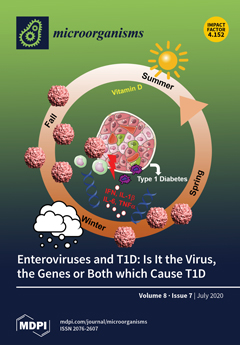In France, animal tuberculosis (TB) due to
Mycobacterium bovis (
M. bovis) affects a multi-host community that include cattle and wildlife species such as wild boars (
Sus scrofa), badgers (
Meles meles), or wild deer (
Cervus elaphus, Capreolus capreolus). The involvement of foxes in the epidemiology of TB is fairly described in countries facing multispecies concerns. After the discovery of grouped cases of TB in foxes in a French TB endemic region, a study was implemented in the core of four TB endemic areas in Dordogne, Charente, Landes (departments of Nouvelle-Aquitaine region), and Côte-d’Or (Burgundy-Franche-Comté region). No infected fox was found in Côte-d’Or (n = 146), where in parallel TB in cattle and other wild species became sparse in the last years. In contrast, in Dordogne, Charente, and Landes, 13 (n = 184), 9 (n = 98) and 7 (n = 140) foxes were found infected by
M. bovis, respectively, corresponding to 7.1% (CI
95% 3.8–11.8%), 9.2% (4.3–16.7%) and 5.0% (CI
95% 2.0–10.0%) prevalence rates, respectively. These infection rates are comparable with those observed in badgers and wild boar in these same three areas (ranging from 9 to 13.2% and 4.3 to 17.9%, respectively), where the number of cattle outbreaks has increased in the last 10-15 years. In each area, the genotypes of foxes’
M. bovis isolates were the same as those in local cattle and other wildlife species. None of the infected foxes presented TB-like gross lesions.
M. bovis was found in the mesenteric lymph nodes of 28 foxes (68%). For the 12 foxes where retropharyngeal and respiratory lymph nodes were analyzed separately,
M. bovis was present in the respiratory lymph nodes of eight individuals. With regard to excretion, appropriate samples were available for 12 infected foxes from Dordogne.
M. bovis DNA was detected in the feces of five of these animals, four of which were infected in the mesenteric lymph nodes. Combined with the knowledge on the biology and ecology of foxes, the results of this study suggest that in areas where infection in cattle is still active in France, foxes might play a role of spillover host in the epidemiology of
M. bovis.
Full article






